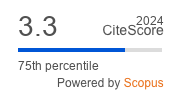Article | Open Access
Examining Aspects of Digital Inclusion Among National Samples of US Older Adults
| Views: | 3149 | | | Downloads: | 2792 |
Abstract: We live in a world where we are constantly connected to devices (e.g., smartphones, computers, tablets) and are encouraged to go online to find information about most things in society. This constant digital connection provides the means whereby many individuals communicate and exchange social support. For most demographic groups, this results in being online and connected to devices multiple times each day. Older adults have been slower to adopt and use emerging information and communication technologies (ICTs). Their digital divide in comparison to other age groups may not be an accurate representation of their technology use and the reasons for this use. This descriptive study examines this view of digital inclusion by focusing on older adults and their uses of technology. We provide an overview of technology usage by different older adult age groups in the United States using existing national‐level data. We utilize life course and aging theoretical perspectives to help articulate how older adults use a wide variety of ICTs and whether they are constantly connected, and we note that while a constant connection to devices may be normative for younger age groups, this may not, and perhaps should not, be the case for older adults. The article concludes with a discussion of the social construction of digital inclusion and emphasizes the significant variation that exists in this construct, measurement of technology use in large‐scale datasets, and variation in technology use across older adult life course groups.
Keywords: digital divide; digital inclusion; Internet; life course; older adults; technology use
Published:
© Amy M. Schuster, Shelia R. Cotten. This is an open access article distributed under the terms of the Creative Commons Attribution 4.0 license (http://creativecommons.org/licenses/by/4.0), which permits any use, distribution, and reproduction of the work without further permission provided the original author(s) and source are credited.


